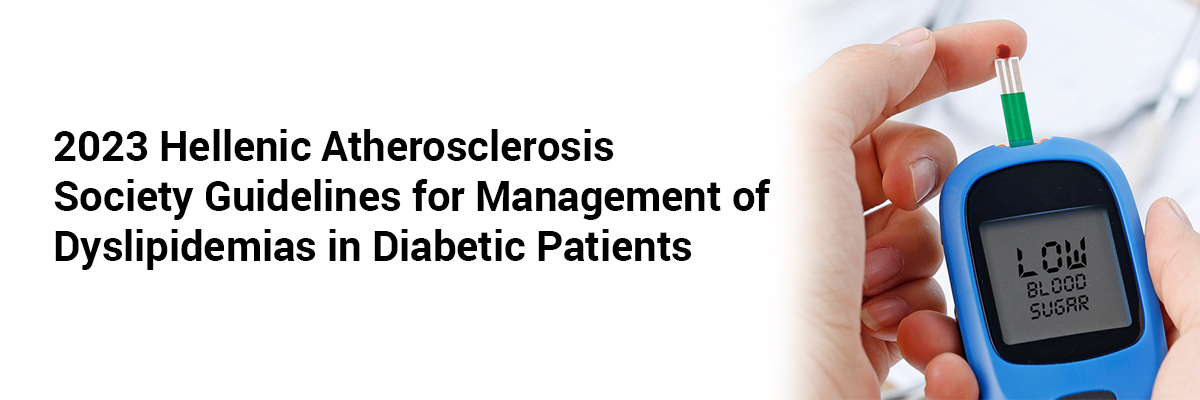
2023 Hellenic Atherosclerosis Society guidelines for management of dyslipidemias in diabetic patients
Atherosclerotic cardiovascular disease (ASCVD) is the leading cause of mortality globally, and dyslipidemia is considered as a significant risk factor for the development of ASCVD. Hence, prompt diagnosis and appropriate management of dyslipidemia plays a critical role in the prevention and treatment of ASCVD.
Patients with type 2 diabetes (T2D) present with atherogenic dyslipidemia are typified by elevated total cholesterol (TC) and triglyceride (TGs), low high-density lipoprotein cholesterol (HDL-C) and ‘normal’ or increased low-density lipoprotein cholesterol (LDL-C) levels.
Based on each patient's risk for ASCVD, the main treatment objective for lipid abnormalities in T2D patients is LDL-C. However, this objective is not followed in situations where TG levels are very high i.e., >500 mg/dL, and reducing TG levels is crucial to preventing severe pancreatitis. LDL-C targets are: <55, <70 and < 100 mg/dL, for T2D patients at very high, high and moderate risk respectively.
The secondary treatment target in T2D includes non-HDL-C (TC minus HDL-C), and should be 30 mg/dL higher than LDL-C target i.e., <85, <100 or <130 mg/dL for patients at very high, high, or moderate ASCVD risk, respectively. In addition, apolipoprotein (ApoB) may also be considered as a secondary therapeutic target in T2D patients with target levels <65, <80 or <100 mg/dL, respectively.
Following are the recommendations for the management of dyslipidemia in patients with diabetes:
- Statins are the first-line drug of choice.
- In order to meet LDL-C objectives, statin medication should be intensified.
- Addition of ezetimibe is recommended, If LDL-C goal is not reached with the maximum tolerated dose of statin dose.
- A PCSK9 inhibitor should be taken into consideration if LDL-C is still off-target after statin and ezetimibe therapy.
- Ezetimibe monotherapy is recommended in cases with total statin intolerance.
- If ezetimibe monotherapy fails to achieve the LDL-C goal in patients with complete statin intolerance, bempedoic acid and/or a PCSK9 inhibitor should be added.
- Statins are regarded as the first-line treatment choice to reduce ASCVD risk in patients with hypertriglyceridemia.
- Icosapent ethyl (at a dose of 2 × 2 g/day) should be adminsitered in combination with a statin, if TGs are 135–499 mg/dL in statin treated patients.
- Fenofibrate may be supplemented with a statin if TGs remain >200 mg/dL despite statin therapy.
- Co-administration of gemfibrozil with statins is not recommended.
- If TG levels are still greater than 500 mg/dL after taking statins and/or fenofibrate, highly pure omega-3 fatty acids (EPA + DHA) may be supplemented.
Source: Katsiki N, Filippatos T, Vlachopoulos C, Panagiotakos D, Milionis H, Tselepis A, Garoufi A, Rallidis L, Richter D, Nomikos T, Kolovou G, Kypreos K, Chrysohoou C, Tziomalos K, Skoumas I, Koutagiar I, Attilakos A, Papagianni M, Boutari C, Kotsis V, Pitsavos C, Elisaf M, Tsioufis K, Liberopoulos E. Executive summary of the Hellenic Atherosclerosis Society guidelines for the diagnosis and treatment of dyslipidemias - 2023. Atheroscler Plus. 2024 Feb 17;55:74-92. doi: 10.1016/j.athplu.2024.01.004. PMID: 38425675; PMCID: PMC10901915.













Please login to comment on this article